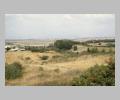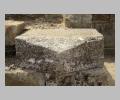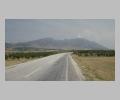| Summary: | A coastal city on Cape Bulustra, E of Kavalla. |
| Type: | Fortified city |
| Region: | Thrace |
Periods:
Archaic
Classical
Roman
Byzantine
Geometric
Physical:
The city had two harbors, the larger one protected by a mole and city fortification walls. The walls extended ca. 5.5 km and enclosed a city designed on the Hippodamian grid system in the 4th century B.C. Houses of the Hellenistic and Roman period survive, as do the theater, Roman baths and a terracotta figurine workshop. Byzantine fortifications have obscured earlier remains on the acropolis.
Description:
Traditionally founded by Herakles, Abdera was in fact a 7th century B.C. colony of Klazomenai which was reestablished in the 6th century by Ionians refugees from Teos. It fell under Persian control in 490 B.C. and later became a member of the Delian League. Philip II conquered the city in ca. 350 B.C. and in 196 B.C. Rome declared it a free city. The city suffered two major destructions: in 376 B.C. at the hands of the Thracian tribe of the Triballi and in 170 B.C. by a Roman force. Abdera was famed for the beauty of its coinage and as the birthplace of Democritus and Protagoras. Although occupied into the Byzantine period it had lost all political importance during the Roman Imperial period.
Exploration:
Excavations began 1950 by D. Lazarides for the Greek Archaeological Service.
Sources Used:
Other Bibliography:





